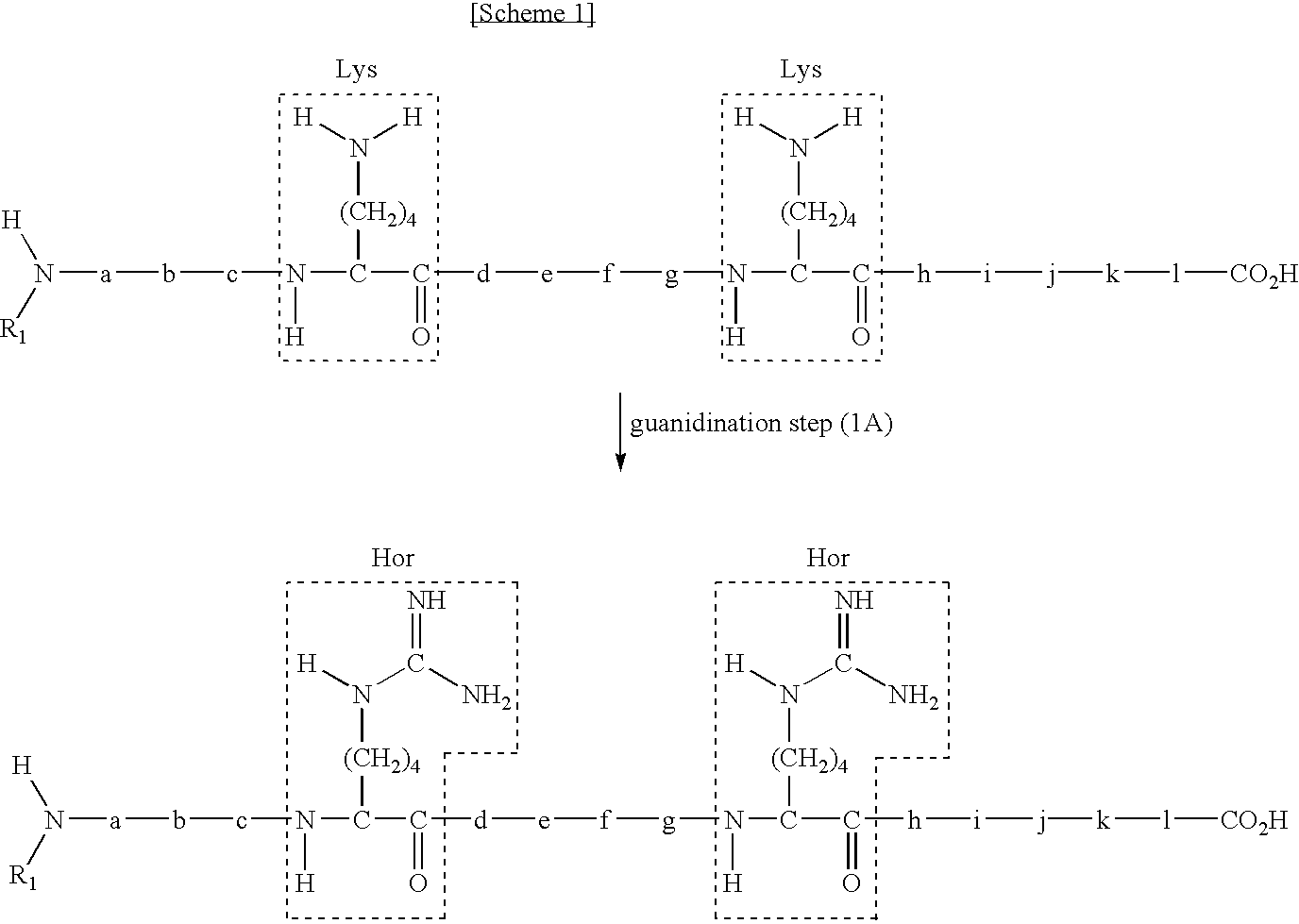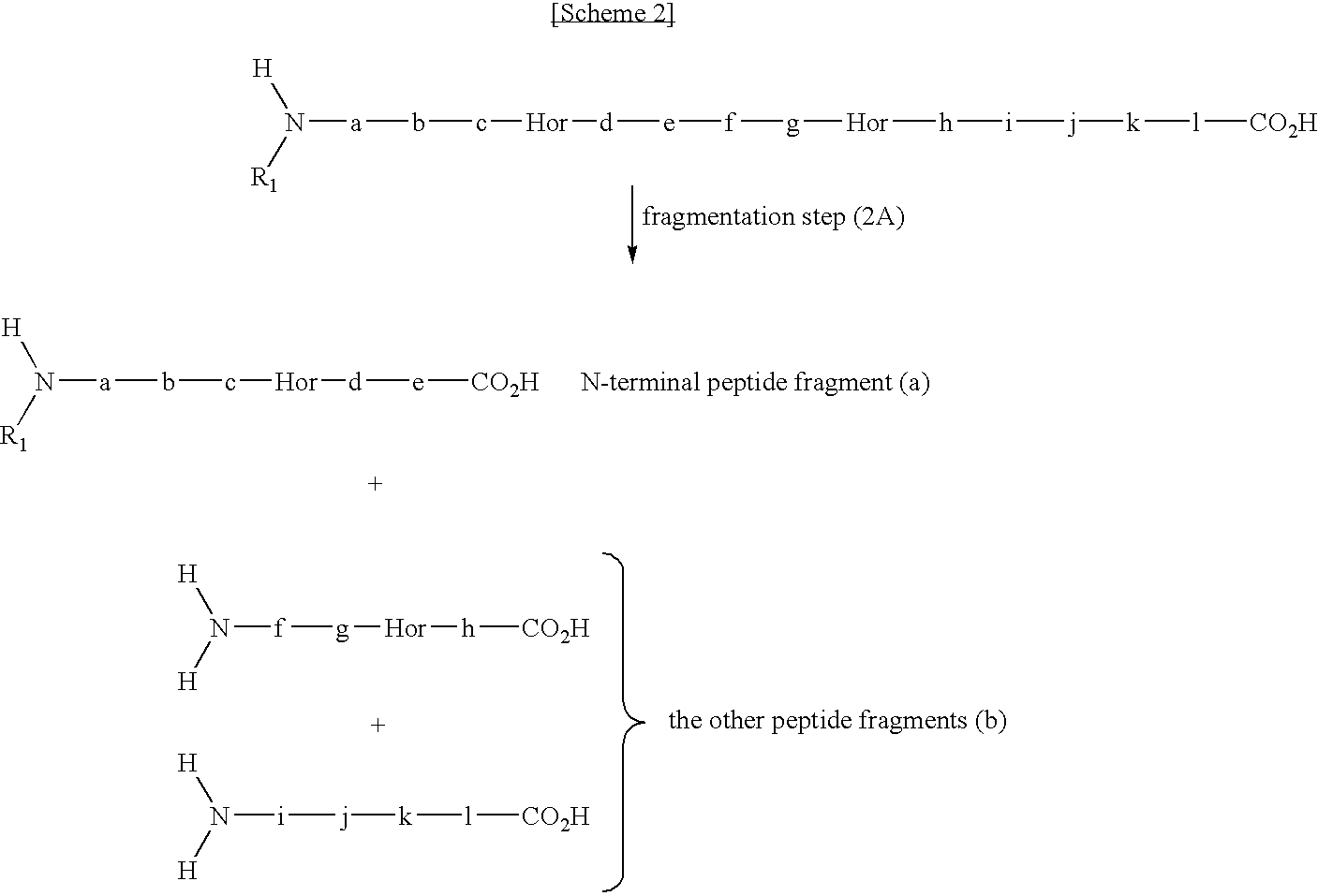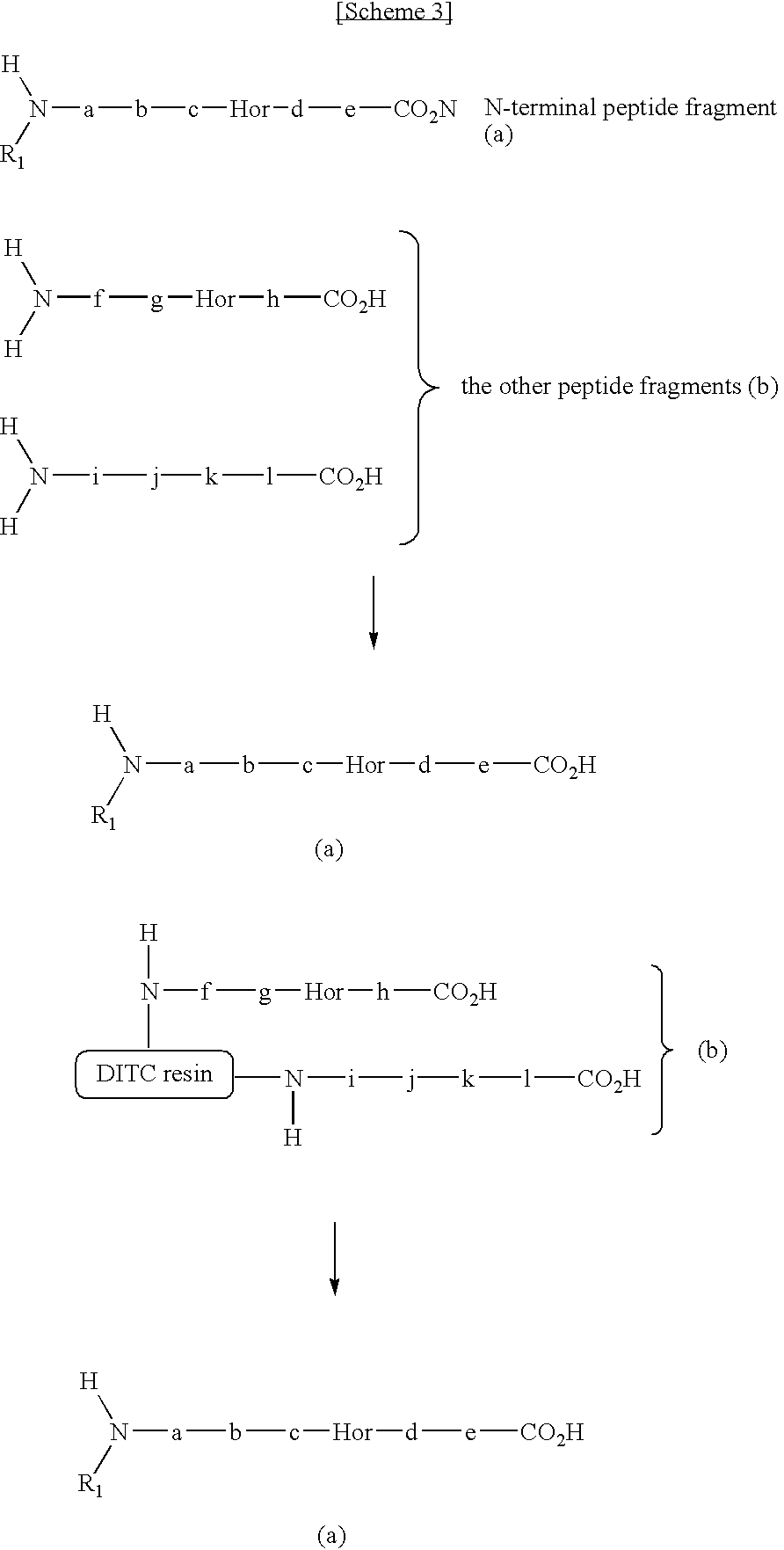Method for selectively collecting N-terminal peptide fragment of protein
a peptide fragment and peptide technology, applied in the field of protein nterminus collection, can solve the problems of low sensitivity, difficulty in hplc analysis, and failure to directly sequen
- Summary
- Abstract
- Description
- Claims
- Application Information
AI Technical Summary
Benefits of technology
Problems solved by technology
Method used
Image
Examples
example 1
[0119]In this example, N-terminal peptide fragment is collected in a series of steps of guanidination step (1A), fragmentation step (2A), and separation step (3A).
[0120]In this example, neurotensin was used as a sample. While neurotensin is a peptide obtained from humans, bovines, and canines, an artificial neurotensin (Pyr-Leu-Tyr-Glu-Asn-Lys-Pro-Arg-Arg-Pro-Tyr-Ile-Leu (SEQ ID NO: 1 in sequence listing), Peptide Institute Inc.) was used in the present examples. This peptide has pyroglutamic acid residue represented as Pyr at its N-terminus.
(Guanidination Step (1A))
[0121]30 μl 0.67 mM neurotensin, a 33 μl 9N aqueous ammonia solution, and 9 μl 6M o-methylisourea are mixed with one another and the reaction was allowed to proceed at 65° C. for 30 min to guanidinated the peptide. A reversed-phase HPLC chromatogram of the guanidinated neurotensin was shown in FIG. 2 (2 nmol), in which the main peak observed after approximately a 30-minute elution time was determined to be the guanidinat...
example 2
[0125]In this example, N-terminal peptide fragment is collected in a series of steps of guanidination step (1B), N-terminal modification step, fragmentation step (2B), and separation step (3B).
[0126]In this example, Lysozyme (EC 3.2.1.17 from Chicken Egg White: SIGMA Chemical Company) was used as a sample. Lysozyme is dissolved in distilled water with a concentration of 100 pmol / μl. 10 μl of the resulting dissolved Lysozyme was dropped to PVDF membrane (Polyvinylidene difluoride membrane: Nippon Genetics Co., Ltd.), which was cut to a circular with 8 mm in diameter, and dried to be obtained sample-applied PVDF membrane.
(Reduction-alkylation)
[0127]The sample applied PVDF membrane was put into a 1.5 ml tube. 1 ml mixture of 10 mM dithiothreitol in 100 mM ammonium bicarbonate solution and acetonitrile (8:2 v / v) was added to the tube and reacted at 56° C. for 1 hour. After the reaction, the added mixture was removed from the tube. 1 ml mixture of 55 mM iodoacetamide in 100 mM ammonium b...
example 3
[0137]In this example, N-terminal peptide fragment is collected in a series of steps of fragmentation step (2A′), guanidination step (1A′), and separation step (3A).
[0138]In this example, ovalbumin (SIGMA) was used as a sample. ovalbumin is dissolved in distilled water with a concentration of 100 pmol / μl. 10 μl of the resulting dissolved ovalbumin was dropped to PVDF membrane (Polyvinylidene difluoride membrane: Nippon Genetics Co., Ltd.), which was cut to a circular with 8 mm in diameter, and dried to be obtained sample-applied PVDF membrane.
(Reduction-alkylation)
[0139]The sample applied PVDF membrane was put into a 1.5 ml tube. 1 ml mixture of 10 mM dithiothreitol in 100 mM ammonium bicarbonate solution and acetonitrile (8:2 v / v) was added to the tube and reacted at 56° C. for 1 hour. After the reaction, the added mixture was removed from the tube. 1 ml mixture of 55 mM iodoacetamide in 100 mM ammonium bicarbonate solution and acetonitrile (8:2 v / v) was added to the tube and react...
PUM
| Property | Measurement | Unit |
|---|---|---|
| diameter | aaaaa | aaaaa |
| v/v | aaaaa | aaaaa |
| v/v | aaaaa | aaaaa |
Abstract
Description
Claims
Application Information
 Login to View More
Login to View More - R&D
- Intellectual Property
- Life Sciences
- Materials
- Tech Scout
- Unparalleled Data Quality
- Higher Quality Content
- 60% Fewer Hallucinations
Browse by: Latest US Patents, China's latest patents, Technical Efficacy Thesaurus, Application Domain, Technology Topic, Popular Technical Reports.
© 2025 PatSnap. All rights reserved.Legal|Privacy policy|Modern Slavery Act Transparency Statement|Sitemap|About US| Contact US: help@patsnap.com



